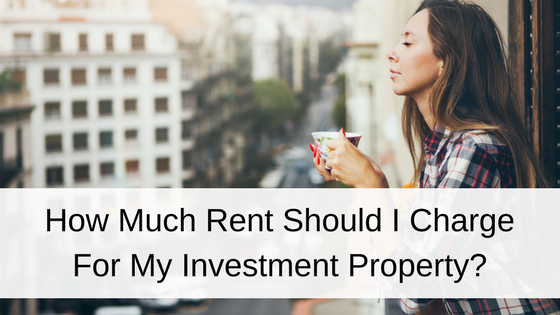
Several factors affect the amount of rent acceptable to charge tenants living in your rental property. For landlords, rental payment amounts are a balance between generating a profitable possible rental income, maintaining a competitive price point, and attracting the best tenants.
In a competitive rental market, most tenants have the opportunity to choose from several different available properties, so setting an appropriate rent amount will help fill the unit quickly and reduce vacancy costs.
The right monthly rental price needs to be on par with comparable rental properties in the neighborhood. There are a few great online resources that allow anyone to compare rent prices based on unit size and location.
Websites like Rentometer.com and Zillow’s Rent Zestimate are good starting points for assisting landlords with determining comparable rents in their property’s neighborhood.
Not All Properties Are Created Equal
Landlords need to remember that not all rental units are created equal. Just because two homes have the same square footage and number of bedrooms and bathrooms, does not mean they have the same desirability, which will greatly affect how much rent can be charged.
Let’s a take a look at this example:
Consider two apartments in the same multi-family complex.
Both apartments are 900 square feet with 2 bedrooms and 1 bathroom. But apartment A has a washer and dryer in the unit, while apartment B does not.
It is reasonable to understand that apartment A is the more desirable unit and will be rented before apartment B. If the landlord is charging the same rental amount for each property, they may lose potential renters who think the landlord is overcharging for apartment B, since it does not include onsite laundry, leaving the unit vacant.
If apartment B was even $10 less than A, a potential tenant would feel more comfortable renting a unit without a washer and dryer.
Features that Increase Rental Value
Below is a list of other factors that affect a rental property’s desirability that could mean the difference between a rented and vacant unit. These property features include location, views, square-footage, storage, layout, shared walls, property upgrades, appliances, lawn care, utilities and other amenities.
A high desirability means you can potentially charge more rent in a competitive rental market. More desirable properties also attract the best type of tenants.
Location

Is your unit close to schools, stores, restaurants and businesses? If your rental has a desirable walkability score, you have an opportunity to ask a higher rent amount.
Other things to consider about the location of your unit is the safety and quality of your neighborhood. You could own a beautiful, updated rental property, but if it’s located in a dumpy looking neighborhood, it’s unlikely you will succeed with a high rent.
View
In multi-unit properties, it’s reasonable to ask more for a unit with a garden view or country view. Consider asking less if your property has no view or looks directly into a neighbor’s unit.
Square-Footage
A property with lots of space is more desirable than a property with limited living space, even if they have the same number of bedrooms.
Extra Storage
Extra closet space, more kitchen cabinets, and outside storage all raise an apartment’s appeal. Apartment managers should also consider offering a storage rental for an extra monthly fee. With this system, a tenant can commit to a lease and then access extra storage as needed, meaning secure tenancy and extra income for you down the line.
Layout
Open layouts are the most desirable and “railroad style” are the least popular layout.
Shared walls
You might not be able to charge more for a rental unit without a shared wall, but “no shared walls” increases the desirability and can help rent the unit faster.
Updates
New windows, fresh paint, new carpet, hardwood floors, and modern appliances. Tenants are usually willing to pay more for an apartment with new features.
As a bonus for both you and your tenants, clean and “new” feeling apartments are usually easier to keep clean and require less maintenance.
Appliances
Like the example above, the monthly rent will be higher in rental properties with a washer or clothes dryer or other desirable appliances.
Other extra appliances that will make a unit more attractive include: dishwasher, garbage disposal, microwave and air conditioning.
If the rental property does not include a refrigerator or stove/oven, a landlord needs to seriously consider charging a lower monthly rent.
Lawn Care
Consider including lawn care in your rental price. A lot of young renters do not want to purchase lawn maintenance equipment, nor do they have the time or energy to manage it. Low maintenance yard work will attract more renters and including lawn care in the lease terms means you can charge a higher monthly rental fee.
Utilities
Including utilities with a rental property means one less bill and account a tenant will need to manage. The convenience of paying only one rent bill with utilities included makes a rental property more desirable.
Amenities
Offering internet and cable are great extras that will appeal to renters and raise your potential rent price. Other amenities tenants are willing to pay more for include access to a fitness center, pool, recreation room and outdoor facilities. These extras features provide excellent justification to charge more rent and help with your property’s desirability.
Selecting the Right Asking Rent Price
All these factors, and more, help landlords set appropriate rent amount for their rental properties. Not only will evaluating these unit features allow you to charge a competitive rental rate that makes you money, it can also help give a landlord reasonable expectations about the lack of desirability of a rental property in order to set a fair rent price and reduce vacancies in a competitive marketplace.
You will also benefit from completing an analysis of the fair market rent for your property’s rental area. Consider these tips for how to Find the Fair Market Rent Rate for your Rental Properties.
Bonus Tip: It is important to stay consistent when setting rental prices for multi-unit properties. Determine a fair price and stick to it. It’s a good idea to have your price reasoning in writing (even if you never share it with anyone), so you have tools to address questions when potential tenants ask questions about the rent price or try to negotiate a lower price with you.
As a rental property owner or manager, are there other factors you consider when setting your units’ monthly rental rate?